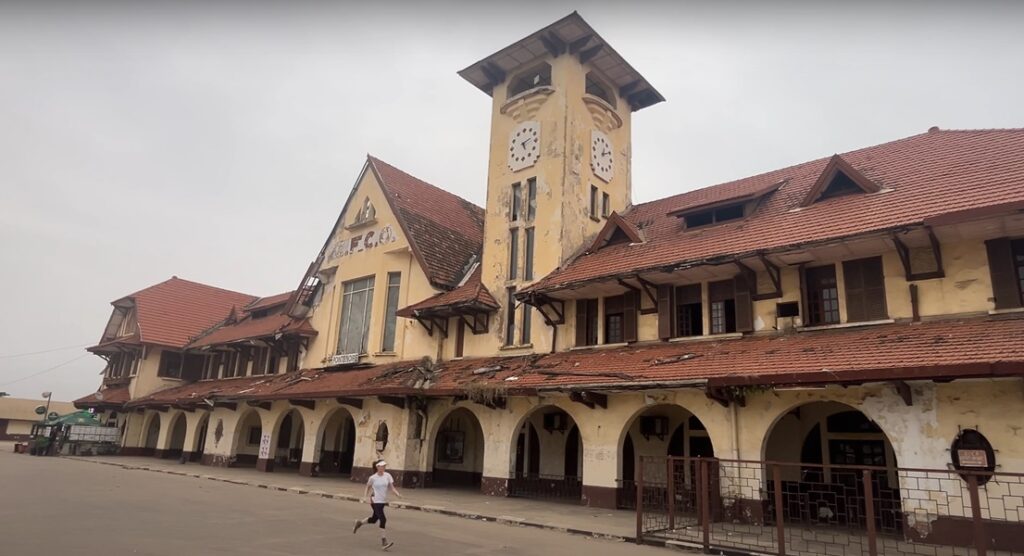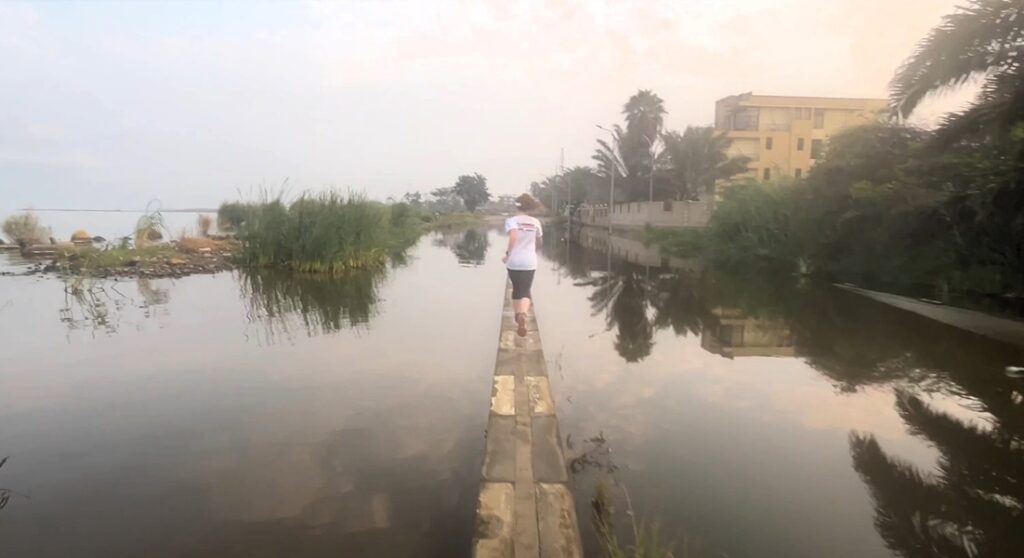Singapore. July 2023.
Running in Singapore feels like being in a science fiction movie, due to the exuberance of its flora, like that of an imaginary planet, and the glass-enclosed verticality of its modern buildings.
🌍 The trip 📷
From Changi to the Marina
We took a taxi from Changi Airport. I associated the name Changi with the prison and the infamous prisoner of war camp during World War II. During the drive, we saw large tropical trees and many residential buildings over thirty stories high. They were modern but impersonal, and their colors seemed an extension of the white and blue cloud-filled sky.
In fact, the motorway is expressly designed to impress the visitor. It purposely gives an image of modernity, with golden flamboyants and bougainvillea.
Chinatown
We had booked a hotel in the center of the city, in the heart of Chinatown.
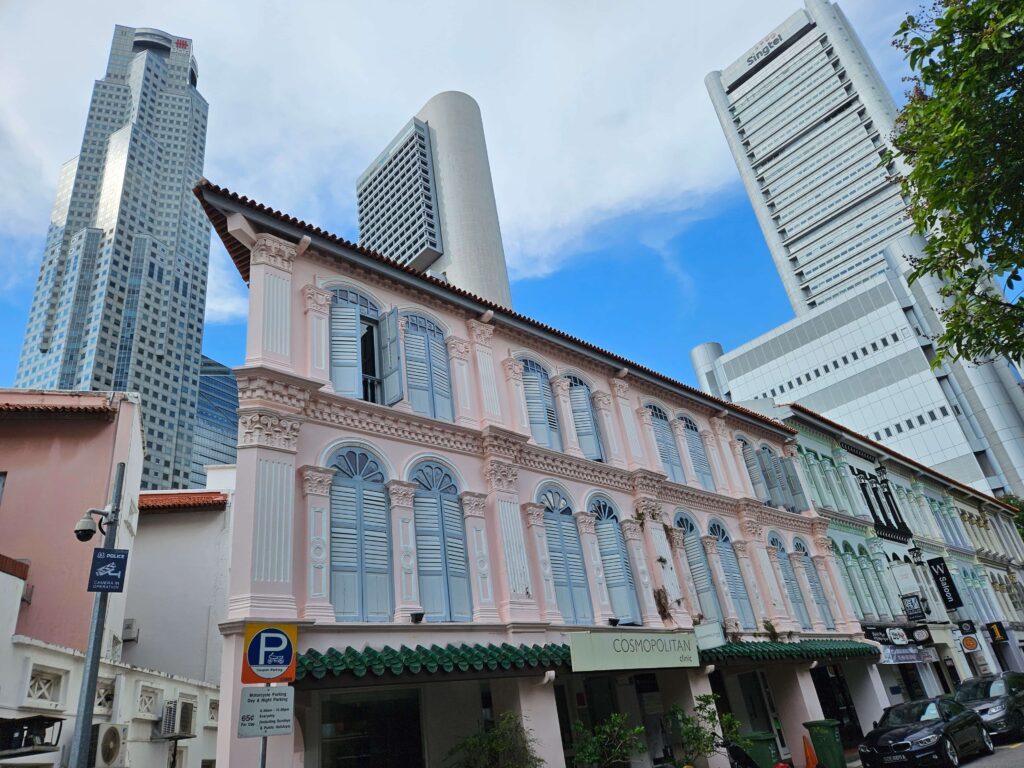
We wanted to go running directly from the hotel. In the area there are two very famous hotels. The classic Fullerton House, built on what was once a fort to defend the city:

And the iconic Marina Bay Sands. But we opted for a capsule hotel, leaving the famous Marina Bay Sands’ “infinity pool” for another time 🙂
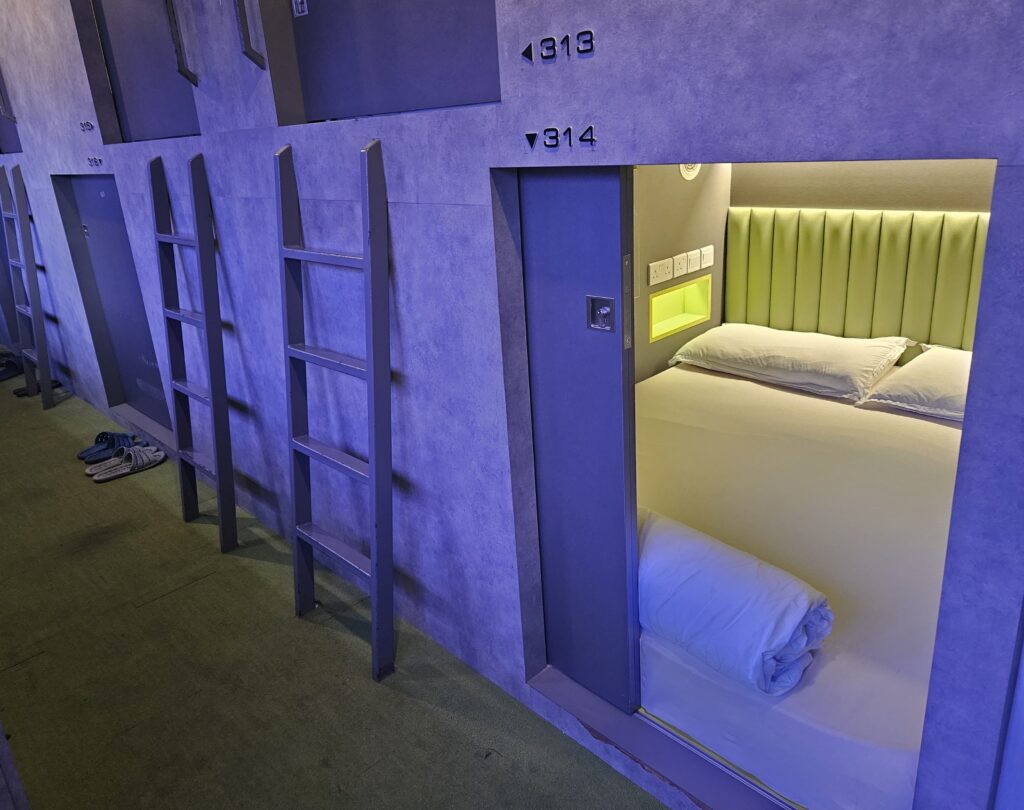
We walked through the center, from Chinatown to the Marina East: inspecting the route that we would later run.
The Marina
The sun was very strong, so there weren’t many pedestrians. We ended up taking refuge in the fully air-conditioned shopping center of Marina Sands Bay. Inside the mall there were well-dressed families enjoying iced smoothies and ice creams, or rowing in the fake river meandering around luxury shops.
Living in Singapore was free, and trade must remain free as well. Without government control, without interference from the authorities. For only free trade was lucrative, particularly in that corner of the world, where several ports competed.
About Singapore in 1860, “The Time of Wild Orchids”, by Nicole C. Vosseler
I found the city center similar to Las Vegas and, at the same time, to the malls of Dubai or Doha.
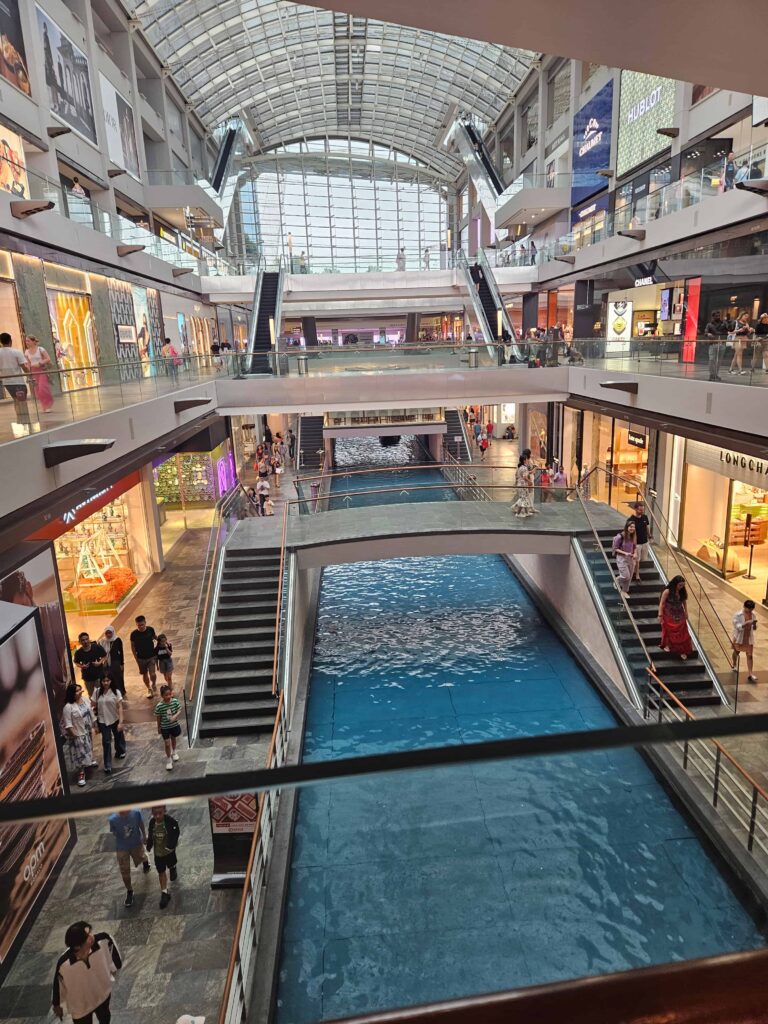
But here the ethnic variety here was much greater: because it was Sunday, afterall. And this is the day the servants have off, as our taxi driver explained.
We saw crowds of people dressed in sarees or Burmese longyis enjoying impromptu picnics under the bridges. Which makes sense, since the bridges offer protection from the merciless sun and torrential rain.
The most famous one is the “Helix” bridge, inspired by DNA helices:
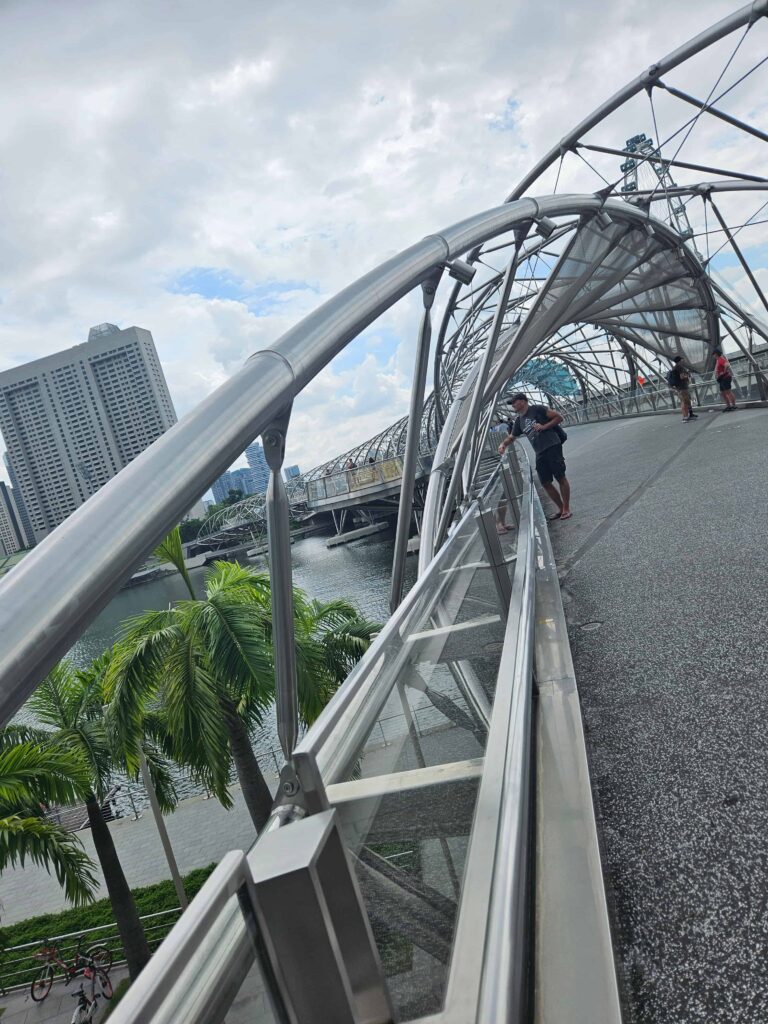
When we got to the Supertree Grove, in the Gardens by the Bay , we turned back. It was time to get changed and run in here.
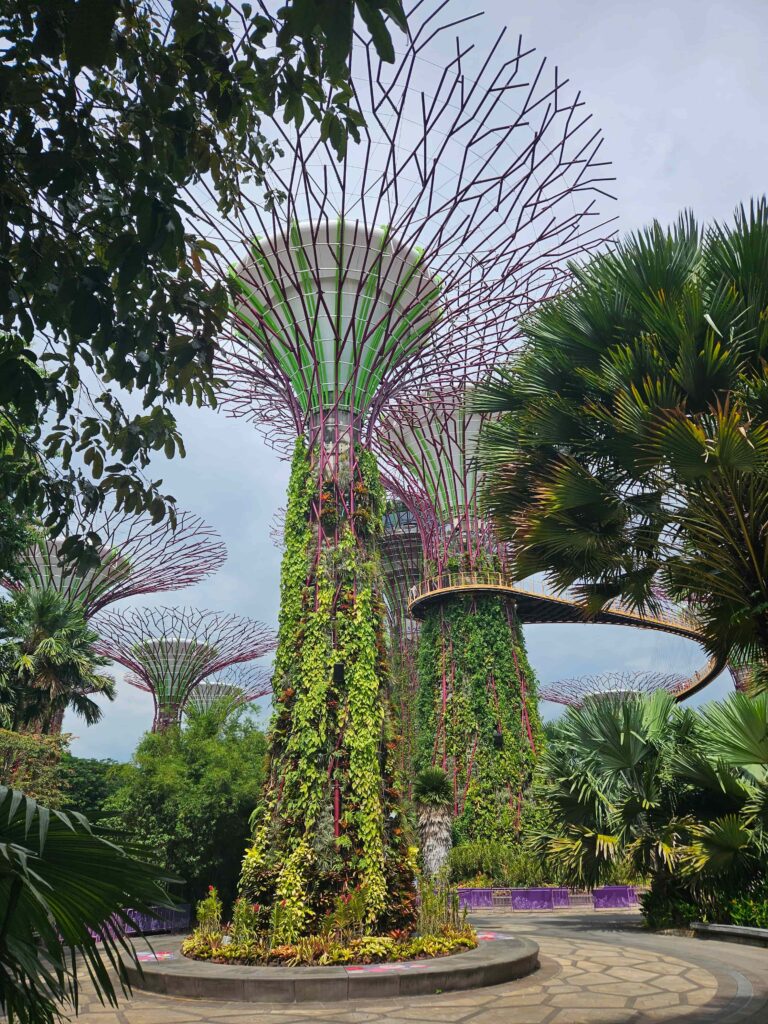
The inclement weather almost boycotted our “run”, funnily enough.
Singapore has two seasons: the dry, and the wet. In July the dry season is ending. And our visit became a kind of metaphor. Because we started the day with a scorching sun and ended it with a storm. We went from seeing people sheltering from the heat under the huge fans powered by solar panels, to seeing them under there again… but this time to protect themselves from the rain!

🍜 Carboloading 🍝
Singapore is famous for its Hawker Centres, defined in this post as a pillar of every Singaporean’s way of life. Char Kway Teow, a stir-fried noodle dish made with flat rice noodles, prawns, Chinese sausage, bean sprouts, and eggs, is high on carbohydrates and very tasty, so very good for carbo loading. Here you can find a list of the best street stalls known for their Char Kway Teow.
One of the most iconic Singapore’s dishes, Hainanese Chicken rice 🍛, is also high on carbohydrates. A serving can have up to 90g of carbohydrates, coming mainly from the rice, which is cooked in chicken broth and often contains chicken fat and aromatics like garlic and ginger. But it is also rich on protein, so good for recovery as well.
🏃♀️ The run 🏃♂️
Where to run Singapore became almost self-evident. There is a route around which you can see, while you run, the most emblematic landmarks of the city-state.
It is an easy route. Flat, except from going up a couple of bridges.

The difficulty lies in avoiding pedestrians: specially if the time of the day is chosen wrongly. You can run more than twelve kilometers, or about eight-odd if you do not reach the National Stadium area, which is what we did.
What we hadn’t counted on…was the sweltering tropical climate of Singapore in July!
Down at the docks, through the long, hot morning and longer and hotter afternoon, we sweated at clearing rubble. Sweated from the sun’s heat, but sweated even more from nervousness at the thought of what the evening would bring
“You will die in Singapore”, Charles McCormac
The route
At 10am, when we went out for a walk to explore the route. The sun was already relentless, and the humidity made running very, very difficult. We didn’t know if we would manage to run later.
But the stars aligned and, around noon, thunder began to sound, it clouded over and suddenly… there was a storm! It was raining quite a lot, but it was better that facing the sun.
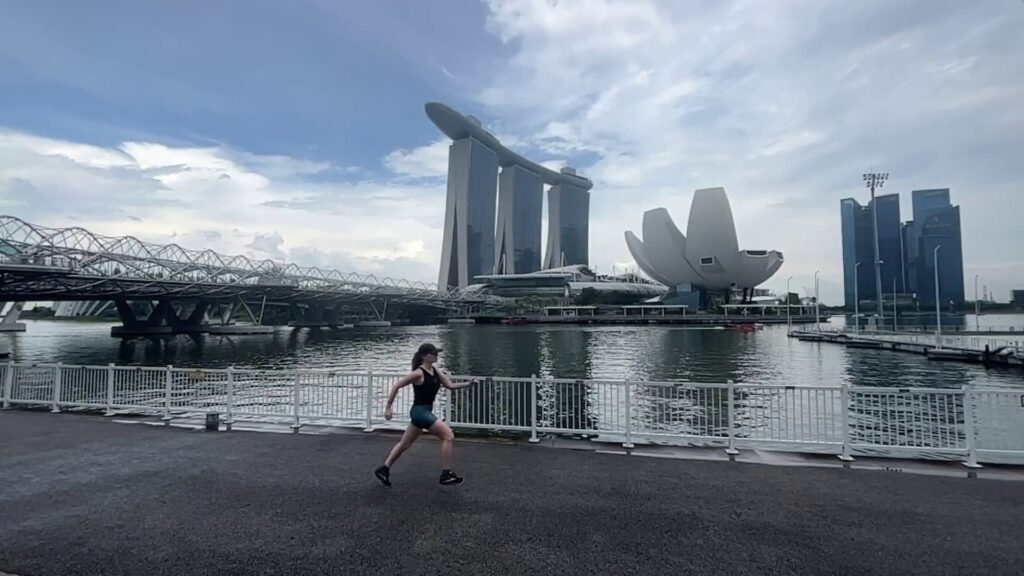
So we went to the hotel, changed into our running gear and by the time we left, it was raining lightly, enough for us to enjoy a magnificent run. We even saw an otter, which looked like it came from Marina Sands Bay!
Let’s go!
The circuit borders the Singapore River, with its tourist boats going up and down it.
First, in Boat Quay, you pass in front of the Fullerton Hotel. Then you see the statues of the “River merchants” and the “First generation”. I really liked this one, it is a string of immortalized children jumping into the water:

You can stop in front of the famous Merlion, the city’s mascot: a statue with the body of a fish and the head of a lion that spits water:
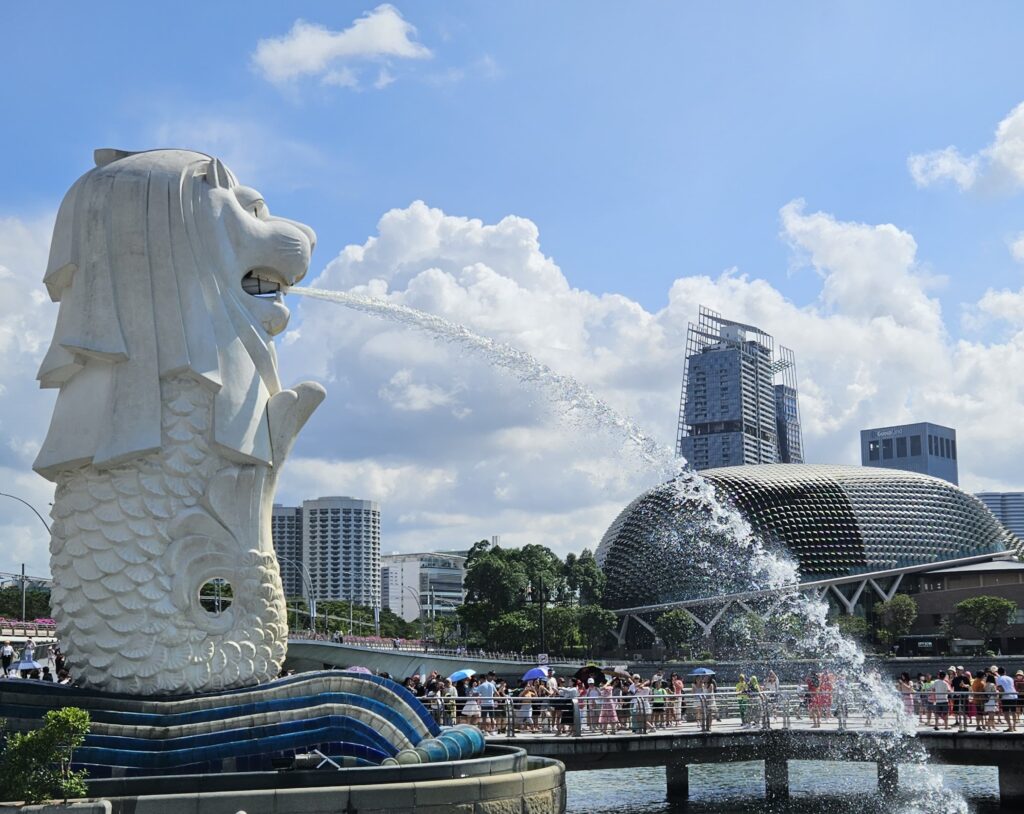
From there you go around wide sidewalks until you reach the Marina Bay Sands, and the Museum of art and science.

The route is flat apart from the ups and downs to bridges. But it is hard on the knees: you run on tiles, cement and asphalt, and, during the times of the day when you can run well, it is too crowded. Maybe that’s why before we had come across a couple of runners trying his luck during the hottest hours.
Bordering the hotel you reach the Gardens by the Bay, where you can run among the famous Super Trees. Also its tropical vegetation and its large glass buildings, the Flower Dome and Cloud Forest. It is a joy to run through the park, although it is not too big.

On our way back
We also crossed the “helix” bridge on our way back; and we arrived running to Fort Canning Park, where a festival was taking place. It was full of young people with very different physiques and clothing, eating and laughing on top of pink plastic and hearing loud music.
In summary, Singapore’s city center is an ideal circuit for sightseeing while running.
Obviously, you need to avoid the hot hours of the day, but, at night, the problem is the large number of people walking and taking photos, both locals and tourists. The best time of the day is definitely quite early in the morning!

Useful information
🏆 Urban circuit around Singapore. Routes ranging from 5 to 12 kilometers, in Singapore, Asia.
⛰️ Difficulty Low.
👟 Wear city running shoes, ideally made of impermeable material due to the frequent rains. Sunscreen, and a lot of hydration!
✅ Scenic route, which allows you to see the most emblematic landmarks of the city.
❌ You have to choose the time of day very well. It is important to avoid the inclement sun, and the hordes of pedestrians. I recommend to run very early in the morning!

Map
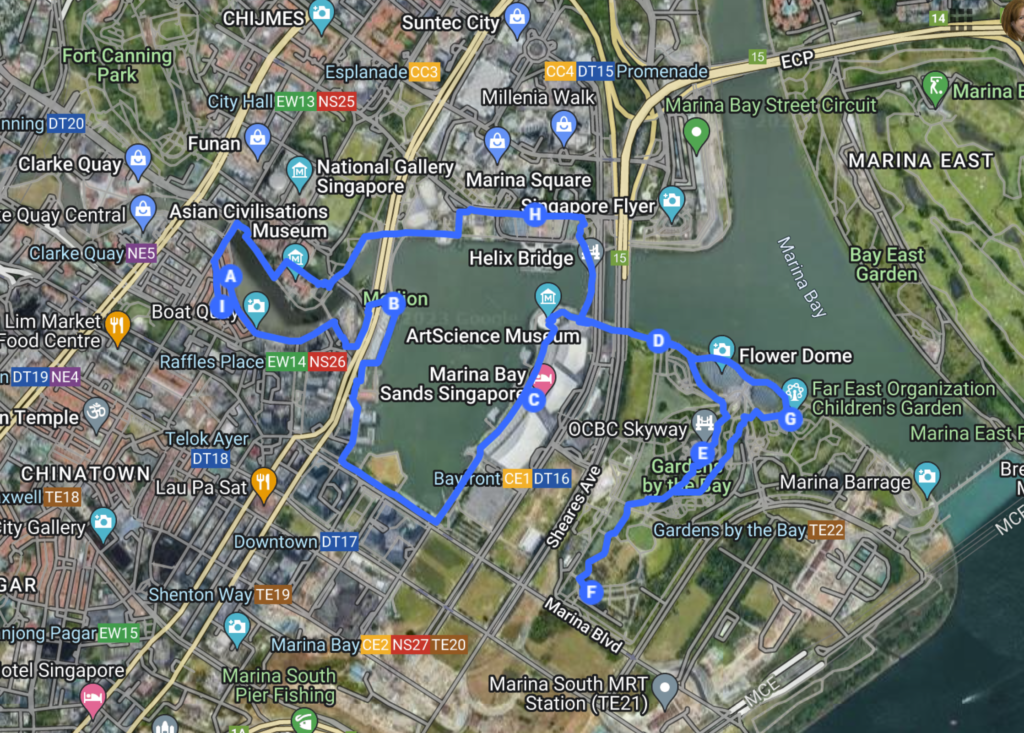
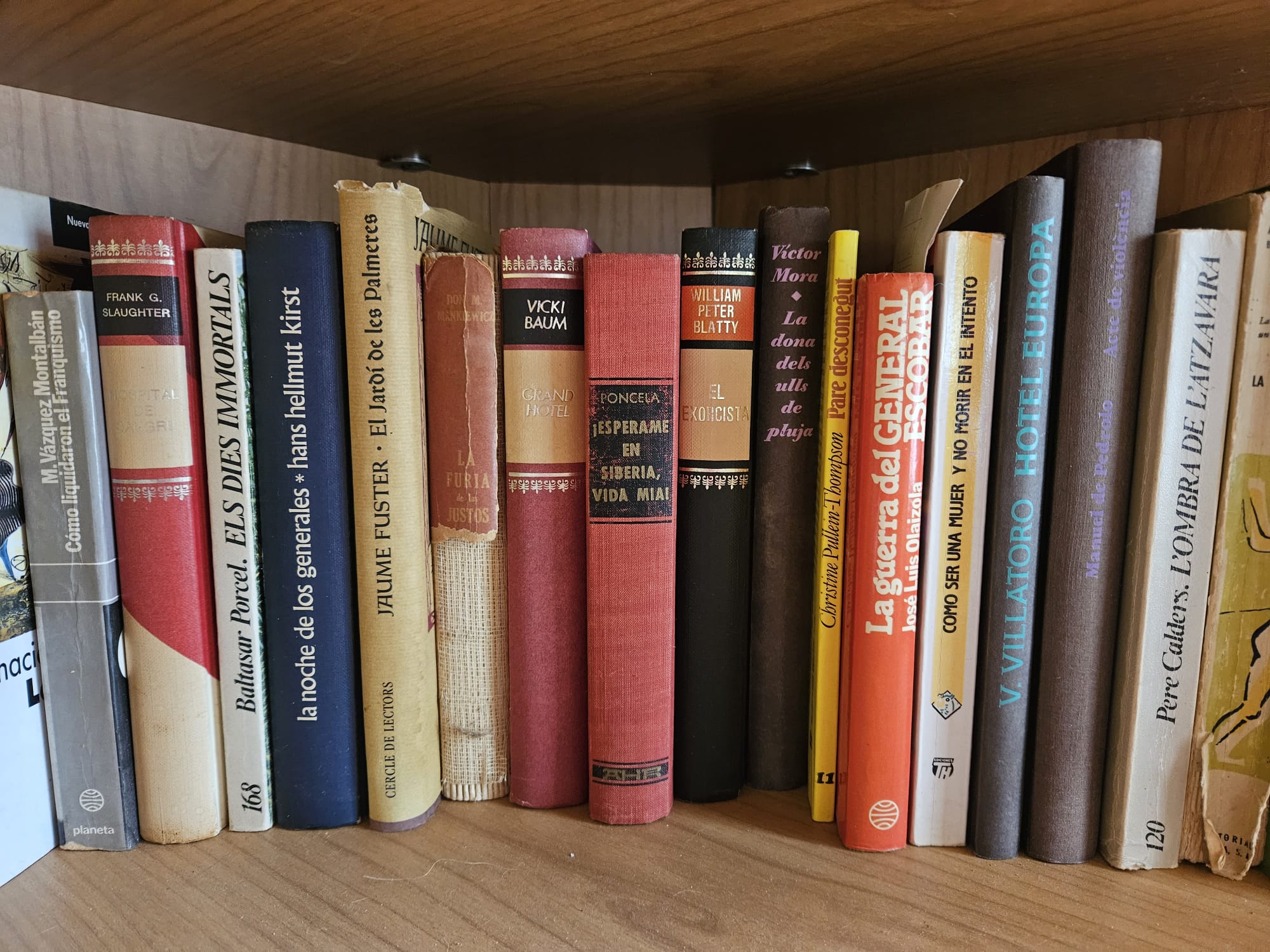
One book
“King Rat”, by James Clavell.
I have been a great admirer of James Clavell’s Asian saga for decades, since I read “Shogun” after a friend’s recommendation.
This book is set in Changi, the infamous prison for British soldiers during WWII, and it tells the story of some of its prisoners, focusing on one guy, a strong, lucky and super cunning man whom everybody calls “King Rat”. And it does it, as John Simpson mentions in his review of the book, with James Clavell’s typical “complicated and exciting way of telling stories”.

Summary: Set in Changi, the most notorious prisoner of war camp in Asia, King Rat is an heroic story of survival told by a master story-teller who lived through those years as a young soldier. Only one man in fifteen had the strength, the luck, and the cleverness simply to survive Changi. And then there was King.

To know more…
| 📖 “You will die in Singapore”, by Charles McCormac 📖 “The Time of Wild Orchids”, by Nicole C. Vosseler |
“You will die in Singapore”, by Charles McCormac
The experiences of a young British RAF soldier stationed in Singapore during World War II.
It includes a “hollywood” escape from a prison camp and a hellish journey through the jungles of Indonesia that lasted almost six months. I was hooked on the story of “Mac”: how the brutality of war caught him and his young wife by surprise, and his incredible trek through the jungle.
It is a highly recommended book; written with verve, with direct prose and details that give you context. During my stay in Singapore, I thought many times about what I had read: when we visited Raffles place, I remembered how Singapore was thought to be impregnable, and how the city fell; and while I felt the sun on my skin, I remember one of the final episodes in the book, when Mac does not recognize himself when he looks in the mirror, due to his burnt and blackish skin.
I especially liked the description of his physical and emotional journey: Mac’s friendship with the Australian Don, how he faces the death of a companion in the jungle, the uncertainty of not knowing what has happened to his family, or the heinous war crimes of the Japanese.
⭐⭐⭐⭐
“The Time of Wild Orchids”, by Nicole C. Vosseler
A long book that portrays the story of two lovers: Georgina, a European born in Singapore, and Raharjo, an Orang Laut, “a lord of the sea.”
Despite the fact that the prose seemed somewhat overloaded to me, and sometimes the character descriptions were somewhat forced and too extensive, the story is engaging and maintains the interest of the reader. You want to know the fate of not only the main characters, but also their children.
What I liked the most is the wonderful setting and the historical details, which are not introduced in a forced way. It’s an epic and romantic story whose main protagonist is the Singapore of the mid-nineteenth century, when the city, very young, began to be “the door to the treasures of Asia”.
⭐⭐⭐



